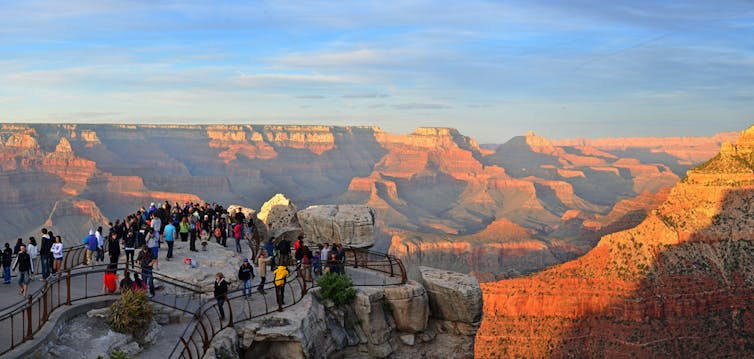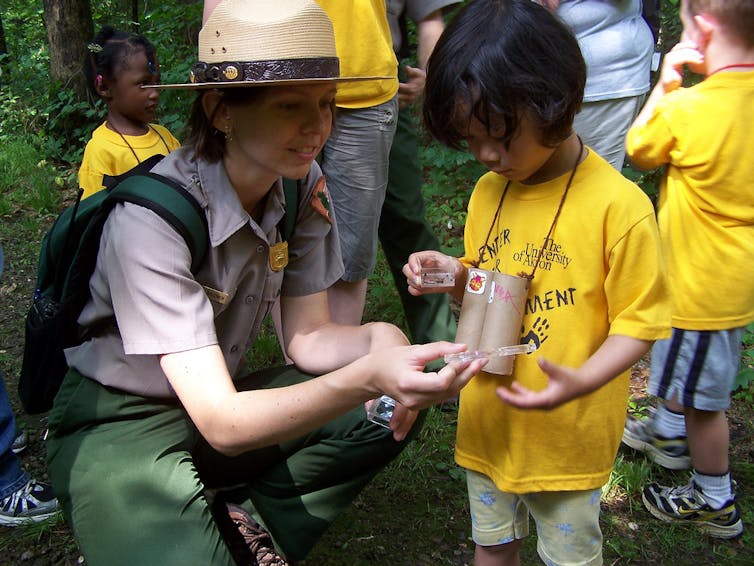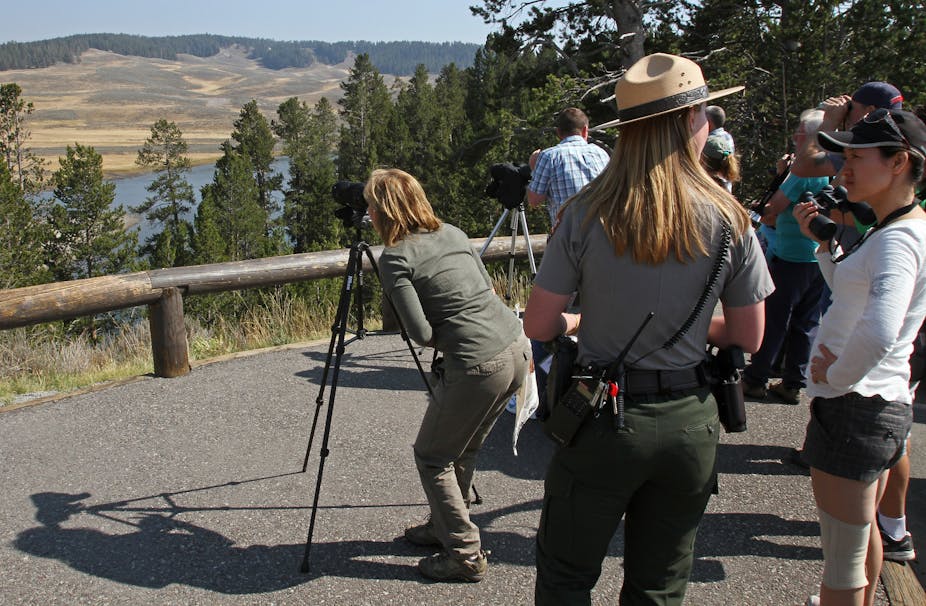One of the quirks of government accounting is that our nation’s most valuable assets – from aircraft carriers to interstate highways – don’t appear on any national balance sheet. In part this is because it is hard to put a value on them. How can we calculate the worth of the Washington Monument? And yet, without such a yardstick, it is hard to calibrate just how much money we should spend to maintain and replenish these precious assets over long periods of time.
America’s national parks – often called “America’s best idea” – are a prime example. The National Park Service (NPS), which manages the park system, celebrated its 100th birthday last summer. From Yellowstone to Ellis Island, the 412 places that NPS protects tell America’s story.
But what are they worth?
Past attempts to answer this question have typically focused on how much money visitors spend in or around the parks. But that is only a small part of the story. In particular, it doesn’t account for people who don’t visit the parks, but who nevertheless treasure the iconic scenery and want America’s historic battlefields, wildlife habitats and finest seashores to be protected.
In a study we conducted independently of the National Park Service, we sought to develop the first-ever comprehensive assessment of what the parks are worth to the public. We calculated that Americans put a total value of US$92 billion per year on our national parks, monuments, seashores and recreation areas. However, what we also concluded is that we are not funding the park system at a level that reflects its value.
Why calculate the parks’ worth?
This project responds to the 2009 report of the Second Century Commission, a group of prominent scientists, historians, legislators and conservationists that considered how to ensure that the national parks thrive over the next century. The commission called for full government funding for NPS, but also recommended creating an endowment to help the agency survive flat or declining federal appropriations.
To lay the groundwork for new funding approaches, we needed to establish a baseline for the true economic value of the park system. This had never been done before.
Using methods similar to the way federal agencies analyze proposed regulations, we conducted a peer-reviewed economic study to estimate what the national parks are worth to Americans. We asked a representative sample of more than 700 households how much they would pay in increased taxes to preserve those assets for themselves and their grandchildren.
Our results showed that Americans put a total value of $92 billion per year on our national parks, monuments, seashores and recreation areas. This represents the amount respondents would pay to preserve the parks ($62 billion) and their programs ($30 billion) – whether they actually visit the parks or not. Ninety-five percent said that protecting national parks for future generations was important, and 81 percent were willing to pay higher federal taxes to ensure that the park system was protected and preserved.

Our estimated value is actually a conservative figure, for several reasons. First, we calculated a value only for the percentage of U.S. households who returned the survey. Those who didn’t respond were assumed to place zero value on the parks – even though our post-survey test showed that most of the nonrespondents simply didn’t have time to fill out a long questionnaire. We chose the most conservative approach in terms of methodology, weighting of the sample and handling responses from people who opposed paying higher taxes on principle.
We also excluded some park benefits which fall into the category of “public goods.” For example, trees in the parks store large amounts of carbon and absorb pollutants from soil and water. We have studied these topics separately using different methodologies.
One surprising finding is that the public cares a lot about programs that the National Park Service runs, such as teaching kids about nature, developing teacher curriculum materials and interpreting historical events. In recent years NPS has devoted enormous time and resources to educational efforts, such as the “Every Kid in A Park” initiative, which aims to bring every fourth grader in the United States to a national park. NPS is also broadening its historical interpretation services to reflect the diversity of our population and experiences of groups such as African-Americans, Latinos/Latinas and women.

Some government officials contend that these efforts are low priorities compared to basic maintenance. But NPS officials see teaching young people about historical sites and conservation as a way to make sure that the next generation of Americans feel connected to the parks and to nature. Our study suggests that NPS is on the right track.
Protecting the parks
Our analysis provides a new perspective on funding for the national park system. The law that Congress passed when it created the NPS charges the agency with preserving the parks “unimpaired” forever. But NPS gets its funding from a combination of visitor fees and an annual congressional appropriation, which total some $3 billion yearly. That amount is inadequate to maintain and invest in an asset valued at over $90 billion.
Moreover, by our calculations, Congress has cut its funding for NPS by 15 percent over the past 15 years when inflation is factored in. Consequently, the agency is fighting an uphill battle to keep parks pristine and unspoiled as visitor numbers climb and climate change stresses natural resources in the parks.
NPS has a backlog of overdue maintenance projects that stands at $12 billion and rising. The list includes park infrastructure, such as roads, bridges, campgrounds, trails and utilities, along with preventing forest fires and repairing historical monuments and visitor facilities.

The NPS has also been hurt by cuts to the federal Land and Water Conservation Fund, which provides money to purchase private properties within parks when they go up for sale in order to prevent development by private buyers. NPS is required to provide services such as utilities and road access to these properties, which are known as inholdings, so often the agency saves money by buying them and merging them into the surrounding park.
Our study reinforces the Second Century Commission’s conclusion that in order to thrive, the national park system needs a new funding model and a more flexible funding structure. Many universities, museums and other charitable institutions use endowments to achieve long-term financial stability that supports their long-term missions. The commission recommended creating an endowment for the park system to provide a steady income that could help NPS to thrive into the next century – for example, by enabling it to issue “green bonds” to pay for infrastructure repairs. We also believe that as a 100th birthday gift, Congress should also give NPS a one-time grant to pay off its maintenance backlog.
Congress is considering legislation that would establish a nonprofit national parks endowment to supplement federal dollars. Another pending bill would create a Centennial Challenge Fund that would match private dollars with federal money to support signature projects to enhance visitors’ experiences. But other proposals would threaten NPS funding, either through direct cuts or indirectly – for example, by slashing budgets needed to enforce the Endangered Species Act and the Clean Water Act.
As the National Park Service celebrates its 101st birthday, our study demonstrates that the American public benefits from just knowing that our national parks are protected for current and future generations. The continued uncertainty of living year to year on an annual budget is incompatible with NPS’ responsibility to provide perpetual protection for the treasured public lands, monuments and ecosystems that make up our national parks.

